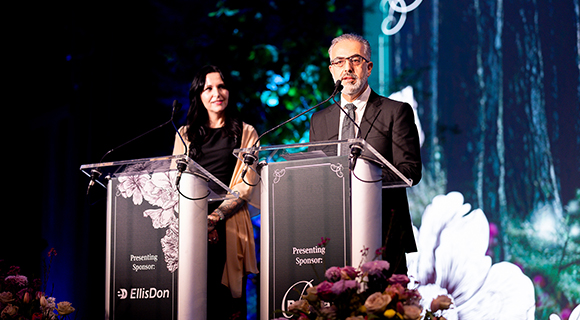Hari Singh Manhas was a prudent man who always looked ahead and planned carefully before he acted. This applied to many aspects of his life, whether he was anticipating the long-term needs of his family, investing his money, or deciding if a charitable cause was worthy of his support.
This thoughtful approach enabled Mr. Manhas and his wife, Mohinder Kaur Manhas, to leave a legacy that will benefit patients in Surrey and students in India.
Son Kuldip Manhas explains that when it came to charitable support, his father always did his homework. “My dad never gave money foolishly – he liked to check things out before he invested.”
Hari Manhas spent much of his working life employed in the forestry industry in Port Alberni. During trips home to India, he often financed projects to improve conditions in his village. After retirement, he began to support a
school that provided children with education from kindergarten to university and he also made provisions to contribute after his death.
He and his wife had many health challenges in their last years, and they died less than a year apart in 2016. After several stays at Surrey Memorial Hospital, Mrs. Manhas asked her son and her grandson, JJ Manhas, to ensure that the hospital received a donation.
In Surrey, the couple’s generosity will live on through a $200,000 investment that made it possible for Surrey Hospital & Outpatient Centre Foundation to establish the new Hari Singh & Mohinder Kaur Manhas Patient Comfort Fund.
Kuldip Manhas was deeply committed to carrying out his parents’ wishes: “My father worked hard and made sacrifices. We know that this donation is going to be used for a good cause, and many people will benefit.”
The Manhas fund will enable frontline staff at Surrey Memorial Hospital and the Jim Pattison Outpatient Care and Surgery Centre to apply for small grants to purchase equipment or other items that will have great benefit to
patients but would not otherwise be possible.
The fund was inspired by the need for a special lift called the Sara Stedy, which Mrs. Manhas used during a stay on the orthopedic ward at the hospital. As there was only one lift per floor, she often had to wait. After Mrs. Manhas passed away, the family donated the lift that they had purchased for her use at home. The lift was much-appreciated by the grateful hospital staff, and her family saw how their donation had made such a significant impact on patient care.


